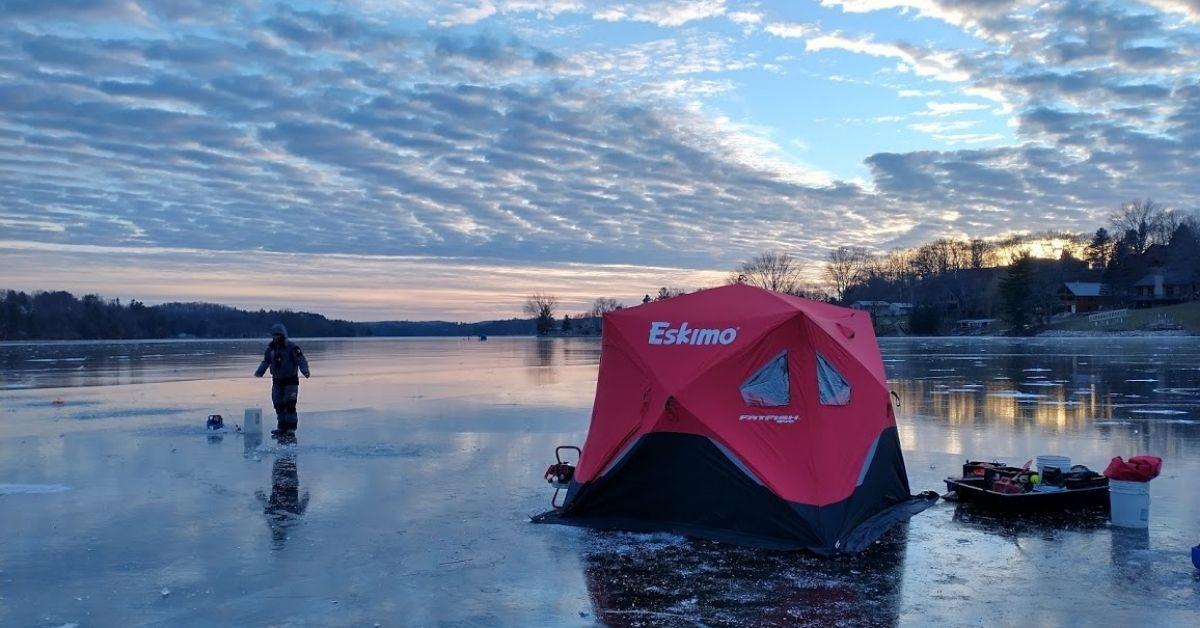Ice Fishing 101: How To Ice Fish Like A Pro
Learning how to ice fishing helps northern anglers fend off cabin fever. Ice fishing is not for the faint of heart. In fact, it can be downright brutal at times with 20+ mph winds and frequent sub-0 degree temperatures. However, if you are located in the part of the country that acquires enough ice to walk on I am sure you have contemplated giving ice fishing a try. Good for you. You have just taken the first step to cure cabin fever! Follow the guidelines below to make your next ice fishing trip a success.
Ice Fishing 101: Be Safe
There is a reason that safety is #1 on this list. You can't ice fish if you fall through and get hypothermia. When in doubt, do not take the risk. Play it safe and give the ice plenty of time to form and strengthen. Depending upon what source you draw from, "safe" ice is no less than 3" in thickness. Personally, I do not walk on the ice until there is at least 4"-5". Even on this ice, it is important to continually check ice quality and thickness as you trek across the lake. Be sure to bring ice picks with you and if you are with another fisherman it is probably a good idea to bring a bundle of rope along, just in case.
Ice Fishing 101: Having The Right Gear
If you are just getting into ice fishing, the amount of gear and tackle available can be downright intimidating. But it doesn't have to be. Realistically you need very little to get started. Perhaps the most important of this gear is your outerwear. Wearing the right clothing will keep you more comfortable and safe while out on the ice. There are many great brands. Do your due diligence and you won't have trouble finding a quality brand.
Next, you will need an ice auger, one or two (or more) rod and reel combos with the line, a few hard or soft lures or live bait depending upon the species you are pursuing, and some minor terminal tackle like pliers, scissors, etc. Keep in mind these are the bare basics. You can also invest in a portable/permanent ice house, but this will cost you some hefty coin, especially for a beginner.
Ice Fishing 101: Know The Regulations
Lastly, it is always a great idea to know the regulations on the body of water you are fishing. Oftentimes, limits and size requirements can change from lake to lake/river depending on where you are fishing. Different states also have different regulations on how many lines you can legally have in the water and many other nuances. These regulations are always listed online or virtually anywhere you can purchase a fishing license. While the Department of Natural Resources officers are great people, they (rightfully) take their job very seriously and won't hesitate to hand out tickets for regulation infractions. Play by the rules and you will be just fine.
Gear Needed To Start Ice Fishing
Rod + Reel
Most ice fishing rods measure between 18-26 inches which will feel comically small the first time you pick one up. The shorter rod increases your ability to jig effectively while also taking up less room in the ice house!
Tackle
Ice tackle is a unique twist on standard fishing tackle. While casting jigs and crankbaits work great in open water, tungsten jigs and raps and spoons are the main players in ice fishing. Even soft plastics get in on the fun, mostly in smaller sizes and sometimes wilder colors!
Clothing
Staying warm on the ice is massively important not only for enjoying your time ice fishing, but also to keep safe. A good jacket, pair of bibs, gloves, hats and socks are all essential in keeping your body warm and free of frostbite.
Accessories
You can't ice fish without first drilling a hole into the lake. The auger is the device used to drill a hole into the ice. Similar to hand tools, augers come in manually operated versions and also battery/gas-powered versions. Also, safety equipment like ice picks and cleats help keep anglers safe while out on the ice. Lastly, specialized gear like tip-ups, rod cases and other gear can help you take your ice fishing game to a new level.
Updated January 13th, 2023 at 7:05 AM CT


